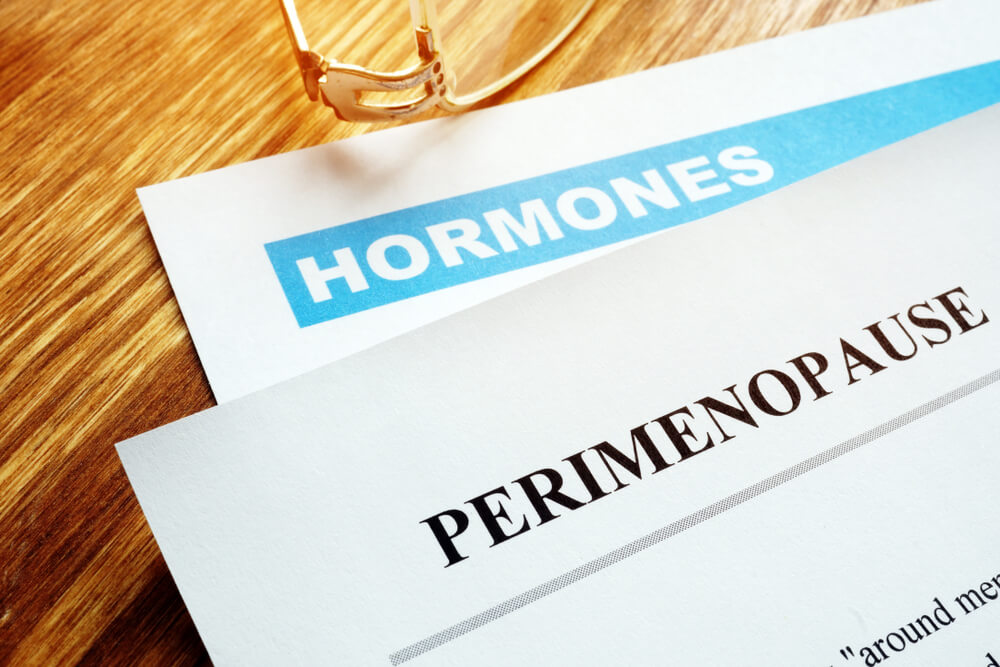If you’re experiencing menopause symptoms but still not at that point in your life, you may be entering perimenopause.
But what are the perimenopause symptoms to be wary of? Are there any tests and treatments you can do if the symptoms get out of hand? Fortunately for you, we’ve gathered up the most crucial and up-to-date information from trusted sources to bring you perimenopause explained.
Now, always make sure to reach out to professionals to get the appropriate perimenopause treatment for you. Remember, we’re all unique, and one woman may require a different treatment approach than another.
With that being said, let’s dive deeper into the must-know facts on perimenopause.
What Is the Deal With Perimenopause?

Before jumping to the perimenopause symptoms, let’s briefly discuss what this term refers to in the first place.
As mentioned before, when the body begins to transition to menopause (also known as “the menopause transition”), you are in perimenopause. This transition happens because the ovaries start generating fewer hormones, leading to an irregular menstrual cycle. At this point, your body is approaching the end of its reproductive years.
Typically, women can start experiencing signs of perimenopause in their mid-30s which may last until their mid-50s. While some women only go through perimenopause for a few months, others may experience signs and symptoms that last up to eight years.
In a nutshell, perimenopause is the point in a woman’s life when her cycles are unpredictable.
You may also notice specific signs of perimenopause once the body begins to adjust to varying hormone levels that we’ll mention later.
Remember, if you’re entering perimenopause, your fertility will start declining. However, that doesn’t mean you can’t get pregnant. When it comes to the perimenopause symptoms, it’s essential to realize that they’ll vary from one woman to the next. Typically, if you have gone a whole year without a menstrual period, you’ve exited perimenopause and entered menopause.
What Are the Usual Perimenopause Symptoms?
During the menopausal transition, some women will experience minor symptoms, while others will notice more apparent signs of entering this specific life stage. The following section shows the most typical perimenopause symptoms.
Irregular Menstrual Cycle
Some women may experience shorter or longer periods, light or heavy flows, or even skip some of their cycles. You might be experiencing perimenopause if the length of your menstrual cycle consistently changes by seven or more days. Also, you might be in late perimenopause if your cycles have 60 days or longer between them.
You can also experience perimenopause spotting, a sign you shouldn’t ignore. Always consult a trusted healthcare professional. We highly recommend Dr. Deborah Siman, a reliable OB-GYN located in Miami, Florida.
Of course, make sure that undereating or excessive stress is not the cause of your irregular period. In addition, it’s important to remember that a low-calorie diet poor in nutrients can disrupt your hormones and cause your period to disappear.
That being said, you should also rule out possible pregnancy as a cause for your irregular or missed cycle.
Disrupted Sleep and Hot Flashes
Hot flashes are common signs of perimenopause and menopause. Interestingly, women who start menopause after ovary removal and chemotherapy may also experience them.
Although the precise cause of hot flashes is a mystery, experts believe they are related to circulation changes. Besides hot flashes, many women can experience chills or a rapid heart rate.
During the night, women in perimenopause and menopause can experience night sweats. The main issue with night sweats is that they can disrupt your regular sleeping patterns and cause fatigue the next day.
However, approximately 2 in 10 women never experience hot flashes.
Vaginal and Bladder Issues
Perimenopause bleeding can be alarming, but so can vaginal and urinary infections too. These mainly happen due to low estrogen levels in the body.
Also, when your estrogen levels drop, the tissues in the vagina may lose elasticity and lubrication, making sexual intercourse painful.
Luckily, you can get proper perimenopause treatment for these symptoms. For example, some professionals will prescribe non-estrogen or oral estrogen therapies. Moreover, you can get DHEA inserted into the vagina for added moisture.
Changes in the Level of Cholesterol
Besides perimenopause spotting, bleeding, and other bodily changes, you may also experience varying cholesterol levels in your body.
Namely, lower estrogen levels will lead to changes in cholesterol levels in the blood, typically increasing the “bad” cholesterol or LDL cholesterol. Simultaneously, HDL or the “good” cholesterol drops as many women age, also elevating the risk of heart conditions. As a result, some women may have a boosted risk of heart disease.
Shifts in Mood Levels
You may have perimenopause if you’re experiencing hot flashes, increased irritability, and frequent mood swings. Although these symptoms are not as concerning as perimenopause spotting or bleeding, you still want to stay alert and consult a healthcare professional.
In addition, sometimes, these symptoms aren’t related to hormonal changes due to menopause but rather another “hidden” condition.
Besides these common symptoms, women may also experience:
- Loss of bone tissue due to low estrogen levels
- Decreased fertility due to irregular ovulation
- Lower sexual
Is There a Perimenopause Test I Can Take?
Unfortunately, no. Currently, there is no such thing as a specific perimenopause test you can take to make sure you’ve entered this point in your life. With this in mind, your healthcare professional will consider many things before making a diagnosis, including your age, menstrual cycle history, and the symptoms you are experiencing.
Although you can’t take one perimenopause test, your doctor may test you for hormone levels. Nevertheless, hormone testing is uncommon and typically unnecessary to diagnose perimenopause.
Before consulting your doctor, you can take a piece of paper and do your perimenopause test. Doing this is simple. Just write down your symptoms and how your body has been feeling lately.
Please take note of your menstrual cycle and whether it’s been inconsistent or not. Look for signs such as perimenopause spotting, hot flashes, and vaginal dryness (to name some). After you’ve done this, take the sheet of paper to a professional.
Which Perimenopause Treatment Can I Get?
So, you’re diagnosed with perimenopause. Now what? Luckily, there are various ways to handle perimenopause symptoms. Here are the most common ways.
Consider Hormone Therapy
Arguably the most popular perimenopause treatment is systemic hormone therapy. These come in skin patches, pills, gel, spray, or cream form. Your healthcare professional might recommend lower doses of estrogen, depending on your family’s medical history.
Women who still have an intact uterus will need additional progestin. One of the most significant benefits of systematic hormone therapy is bone loss prevention.
Try Using Antidepressants

Another popular perimenopause treatment is antidepressants related to SSRIs or selective serotonin reuptake inhibitors. Besides improving mood levels, these antidepressants can help alleviate symptoms such as hot flashes.
Summary
All in all, perimenopause can be frightening, especially if you don’t know anything about it. Hopefully, this insightful article helped shine a light on the perimenopause symptoms, expectations, and possible treatment.
Book Your Appointment Now
If you’re scared, unsure, and anxious about what’s going on inside your body, don’t hesitate to reach out to reliable and friendly professionals. Do something excellent for your health, and book an appointment today.


